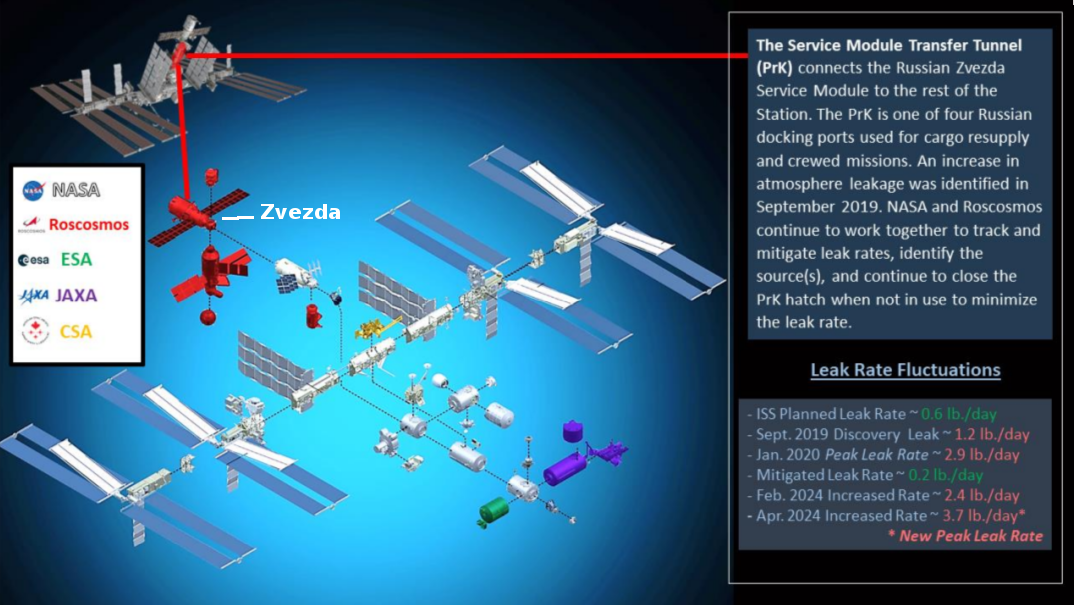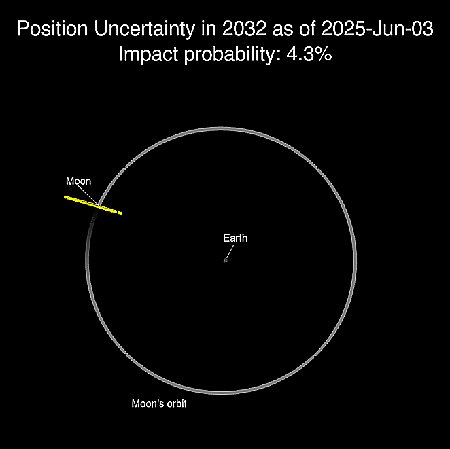Axiom manned mission delayed further because of new Zvezda leaks on ISS

Figure 3 from September Inspector General report, showing Zvezda’s location on ISS.
According to a press update today by NASA, the launch of the commercial Ax-4 manned mission to ISS has been further delayed due to work by the Russians attempting to seal new leaks in the station’s Zvezda module.
NASA and Axiom Space are postponing the launch of Axiom Mission 4 to the International Space Station. As part of an ongoing investigation, NASA is working with Roscosmos to understand a new pressure signature, after the recent post-repair effort in the aft most segment of the International Space Station’s Zvezda service module.
Cosmonauts aboard the space station recently performed inspections of the pressurized module’s interior surfaces, sealed some additional areas of interest, and measured the current leak rate. Following this effort, the segment now is holding pressure.
In other words, the Russians had recently detected an increase in leakage in the module, identified several more cracks inside Zvezda, and have been working to seal them.
The graphic above comes from a 2024 NASA inspector general report, which at that time noted a significant increase in the leak rate in 2024 (see the data in the lower right). Since then it has been NASA policy to close the hatch that connects the American and Russian sections of the station whenever anything docks with Zvezda, due to risk that the docking could cause the module to fail entirely.
Zvezda is one of the oldest modules on ISS, built in the late 1980s and launched in 2000. It is believed the leaks are due to stress fractures in its hull due to the many dockings and undockings that have occurred at its aft docking port.
If the NASA press release can be believed, the situation is under control and the repairs have been successful. If so, expect the Axiom mission to be rescheduled shortly.
If not, we could be witnessing the beginning of the end of ISS, five years earlier than planned by bureaucrats in Washington and Moscow.

Figure 3 from September Inspector General report, showing Zvezda’s location on ISS.
According to a press update today by NASA, the launch of the commercial Ax-4 manned mission to ISS has been further delayed due to work by the Russians attempting to seal new leaks in the station’s Zvezda module.
NASA and Axiom Space are postponing the launch of Axiom Mission 4 to the International Space Station. As part of an ongoing investigation, NASA is working with Roscosmos to understand a new pressure signature, after the recent post-repair effort in the aft most segment of the International Space Station’s Zvezda service module.
Cosmonauts aboard the space station recently performed inspections of the pressurized module’s interior surfaces, sealed some additional areas of interest, and measured the current leak rate. Following this effort, the segment now is holding pressure.
In other words, the Russians had recently detected an increase in leakage in the module, identified several more cracks inside Zvezda, and have been working to seal them.
The graphic above comes from a 2024 NASA inspector general report, which at that time noted a significant increase in the leak rate in 2024 (see the data in the lower right). Since then it has been NASA policy to close the hatch that connects the American and Russian sections of the station whenever anything docks with Zvezda, due to risk that the docking could cause the module to fail entirely.
Zvezda is one of the oldest modules on ISS, built in the late 1980s and launched in 2000. It is believed the leaks are due to stress fractures in its hull due to the many dockings and undockings that have occurred at its aft docking port.
If the NASA press release can be believed, the situation is under control and the repairs have been successful. If so, expect the Axiom mission to be rescheduled shortly.
If not, we could be witnessing the beginning of the end of ISS, five years earlier than planned by bureaucrats in Washington and Moscow.







